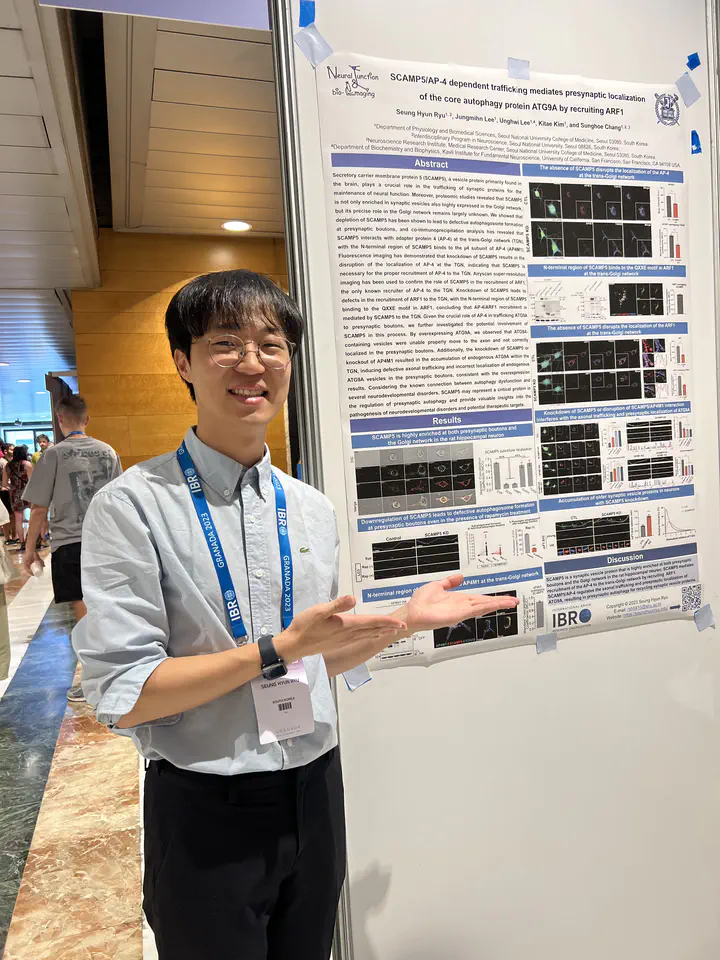SCAMP5/AP-4 dependent trafficking mediates presynaptic localization of the core autophagy protein ATG9A by recruiting ARF1
 Image credit: Seung Hyun Ryu
Image credit: Seung Hyun Ryu
Abstract
Secretory carrier membrane protein 5 (SCAMP5), a vesicle protein primarily found in the brain, plays a crucial role in the trafficking of synaptic proteins for the maintenance of neural function. Moreover, proteomic studies revealed that SCAMP5 is not only enriched in synaptic vesicles also highly expressed in the Golgi network, but its precise role in the Golgi network remains largely unknown. We showed that depletion of SCAMP5 has been shown to lead to defective autophagosome formation at presynaptic boutons, and co-immunoprecipitation analysis has revealed that SCAMP5 interacts with adapter protein 4 (AP-4) at the trans-Golgi network (TGN), with the N-terminal region of SCAMP5 binds to the µ4 subunit of AP-4 (AP4M1). Fluorescence imaging has demonstrated that knockdown of SCAMP5 results in the disruption of the localization of AP-4 at the TGN, indicating that SCAMP5 is necessary for the proper recruitment of AP-4 to the TGN. Airyscan super-resolution imaging has been used to confirm the role of SCAMP5 in the recruitment of ARF1, the only known recruiter of AP-4 to the TGN. Knockdown of SCAMP5 leads to defects in the recruitment of ARF1 to the TGN, with the N-terminal region of SCAMP5 binding to the QXXE motif in ARF1, concluding that AP-4/ARF1 recruitment is mediated by SCAMP5 to the TGN. Given the crucial role of AP-4 in trafficking ATG9A to presynaptic boutons, we further investigated the potential involvement of SCAMP5 in this process. By overexpressing ATG9A, we observed that ATG9A-containing vesicles were unable properly move to the axon and not correctly localized in the presynaptic boutons. Additionally, the knockdown of SCAMP5 or knockout of AP4M1 resulted in the accumulation of endogenous ATG9A within the TGN, inducing defective axonal trafficking and incorrect localization of endogenous ATG9A vesicles in the presynaptic boutons, consistent with the overexpression results. Considering the known connection between autophagy dysfunction and several neurodevelopmental disorders, SCAMP5 may represent a critical protein in the regulation of presynaptic autophagy and provide valuable insights into the pathogenesis of neurodevelopmental disorders and potential therapeutic targets.